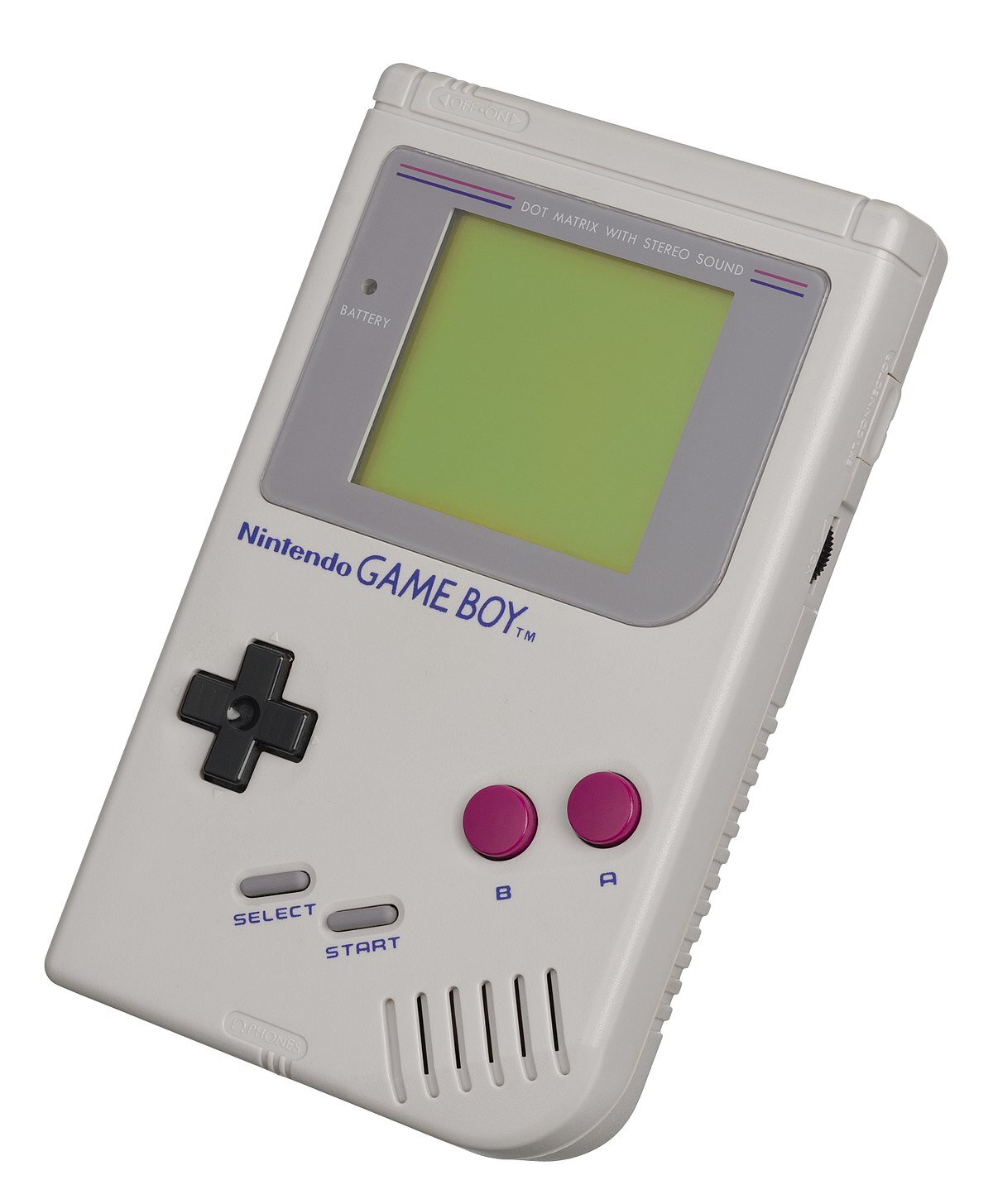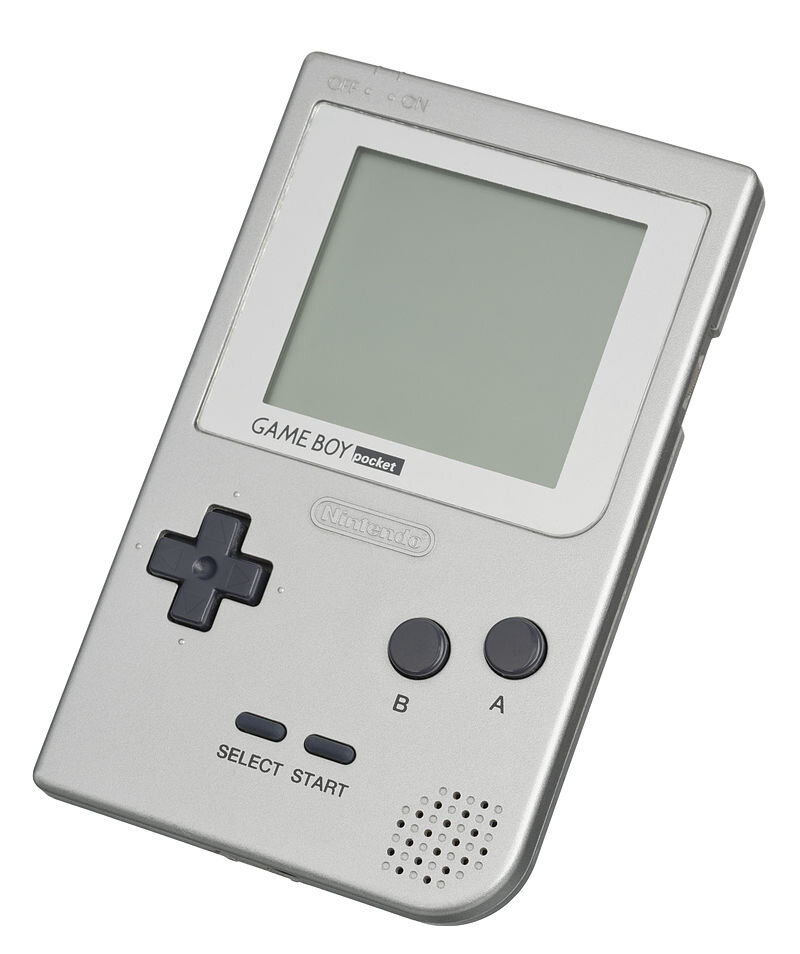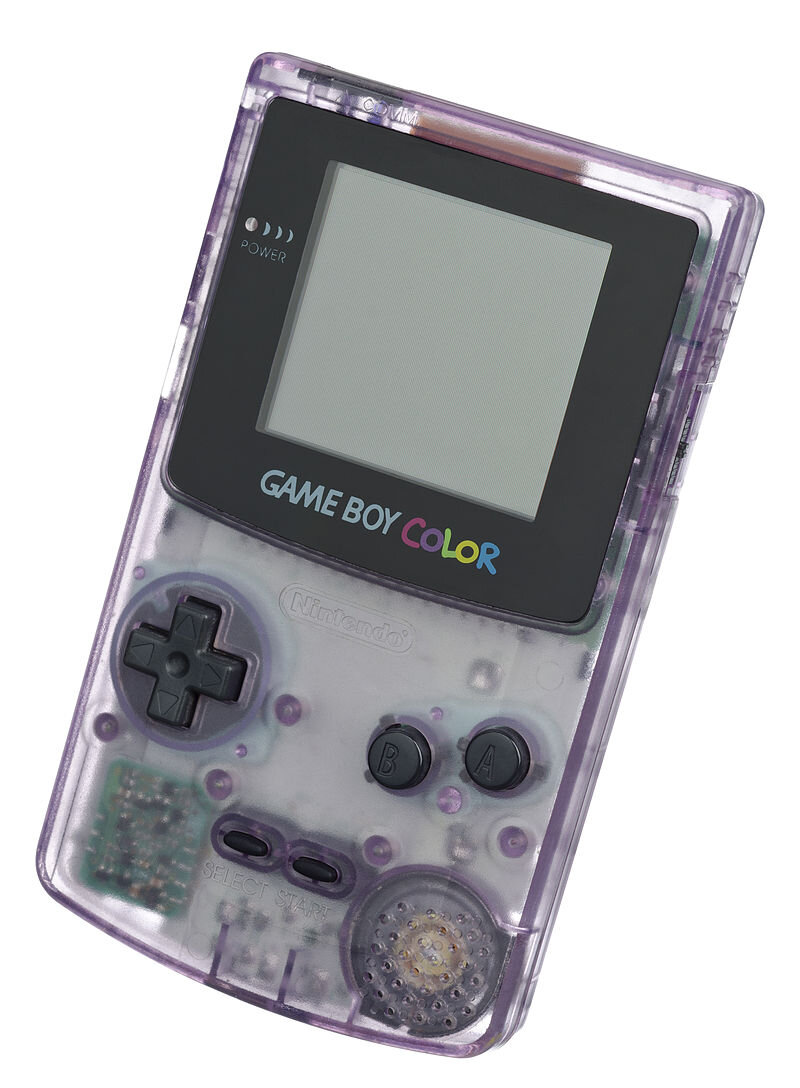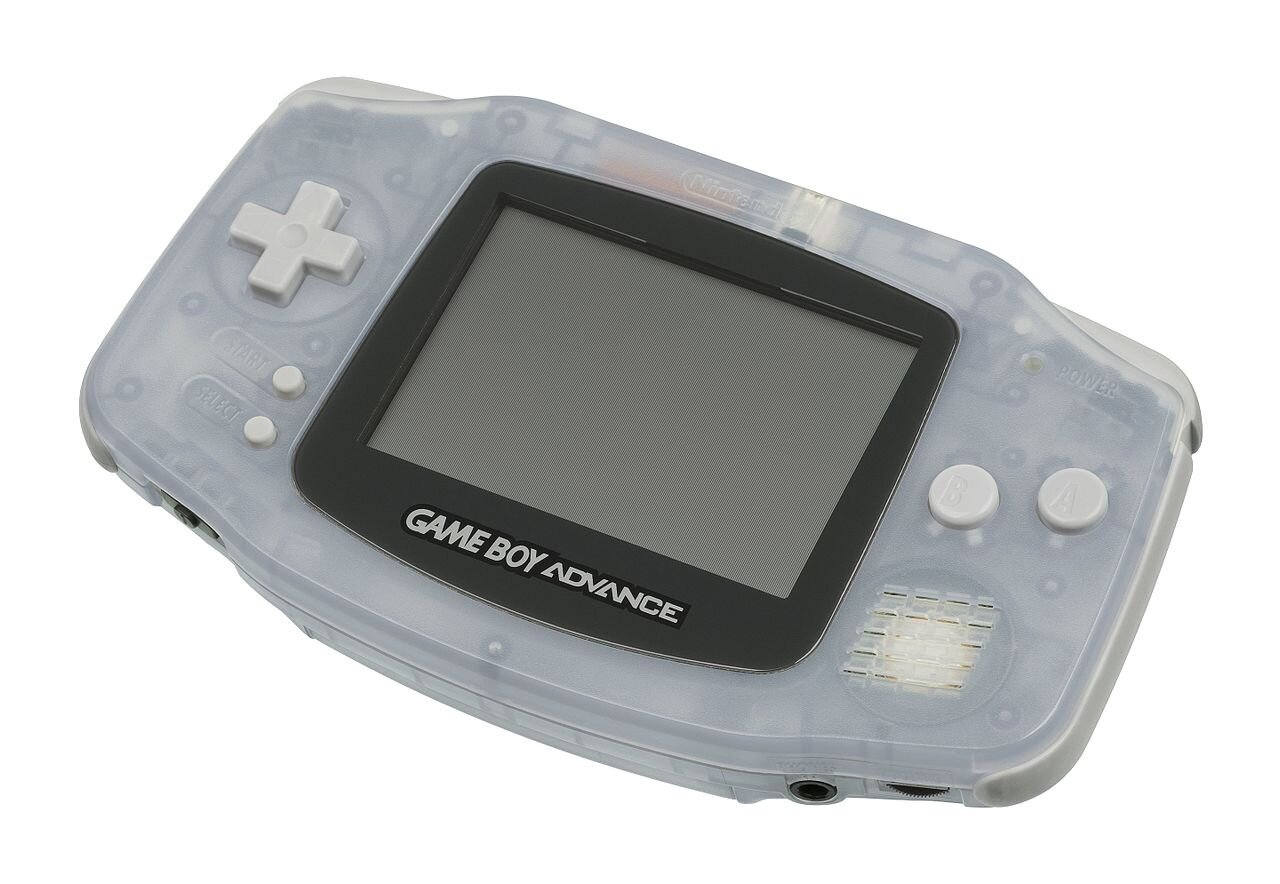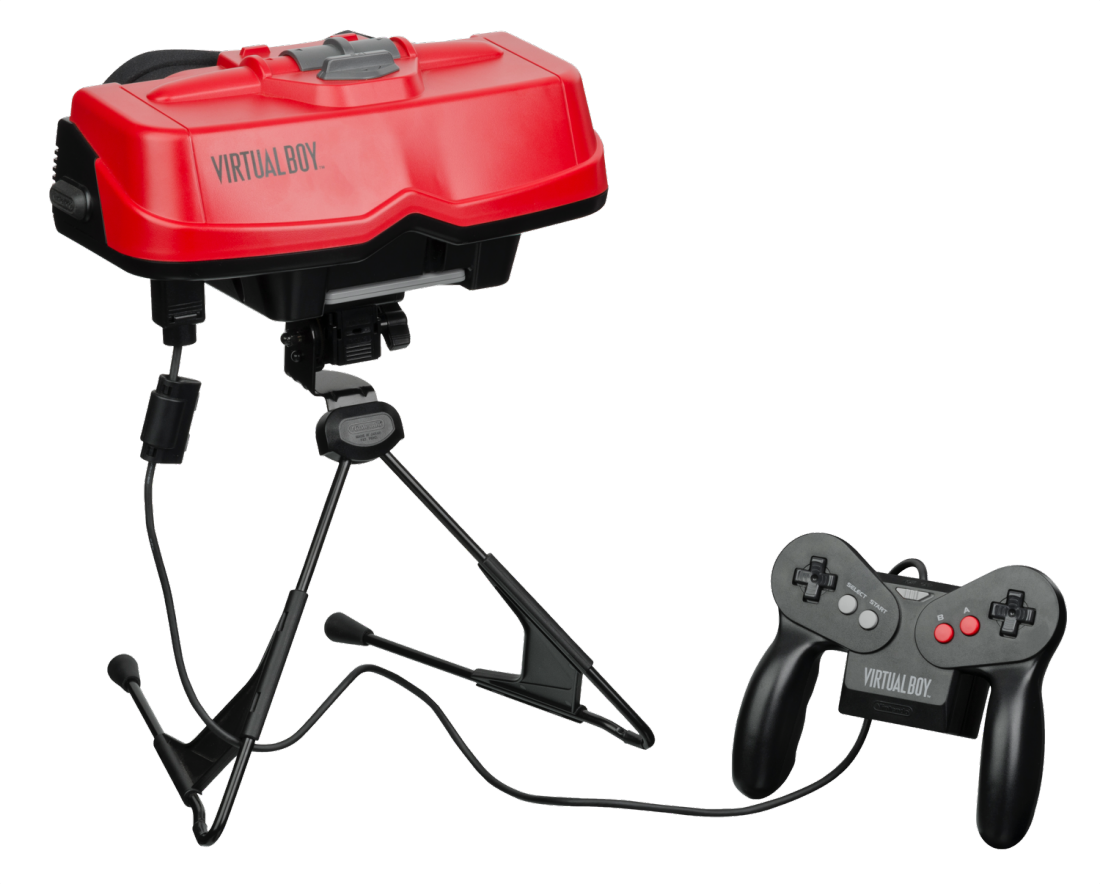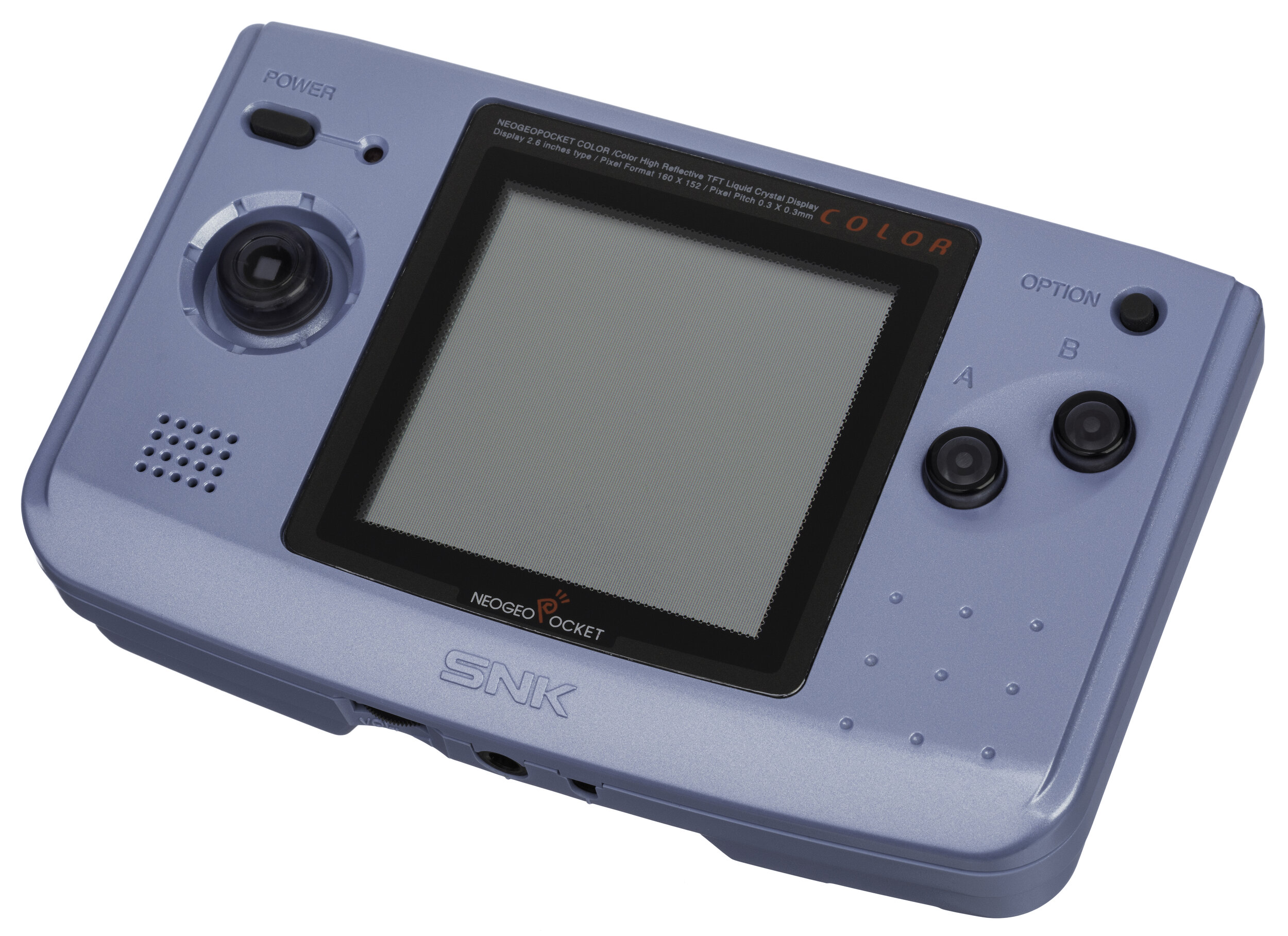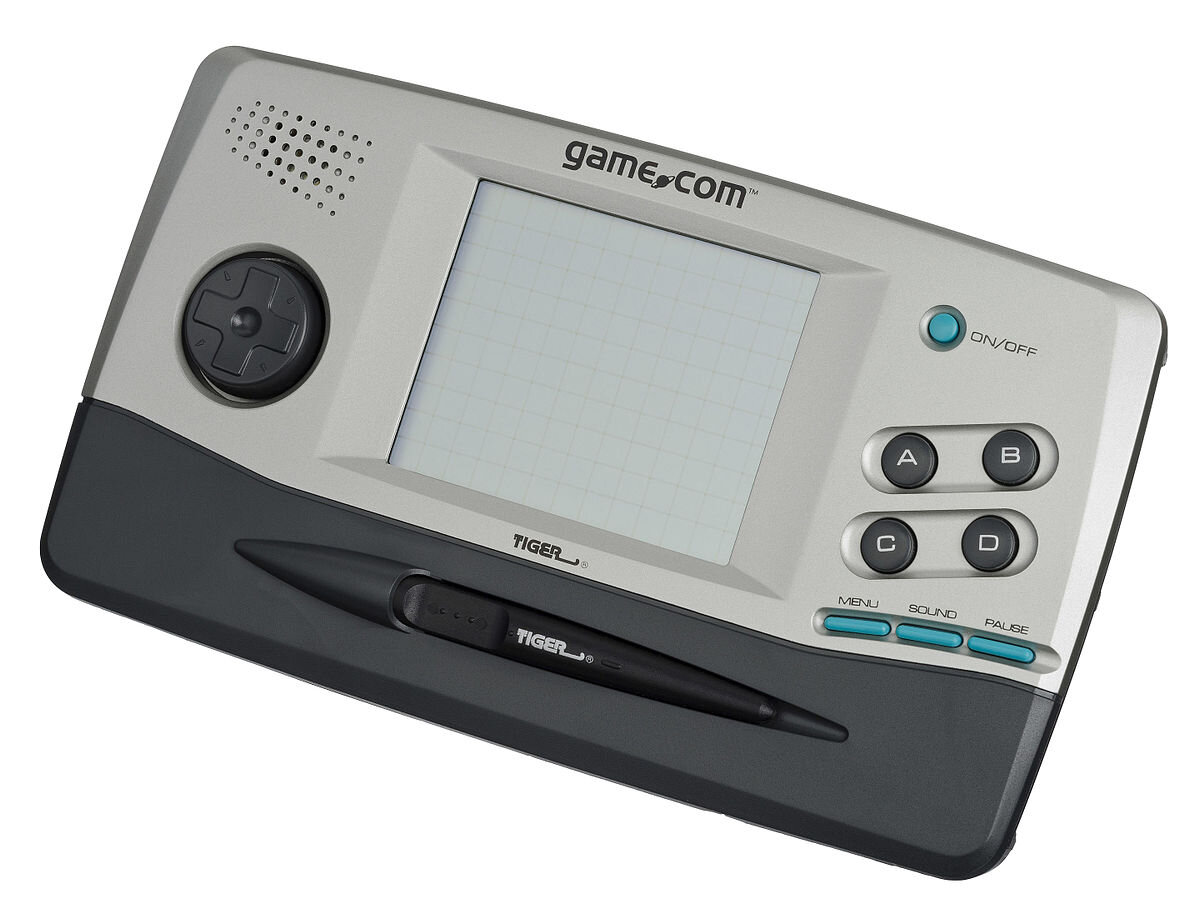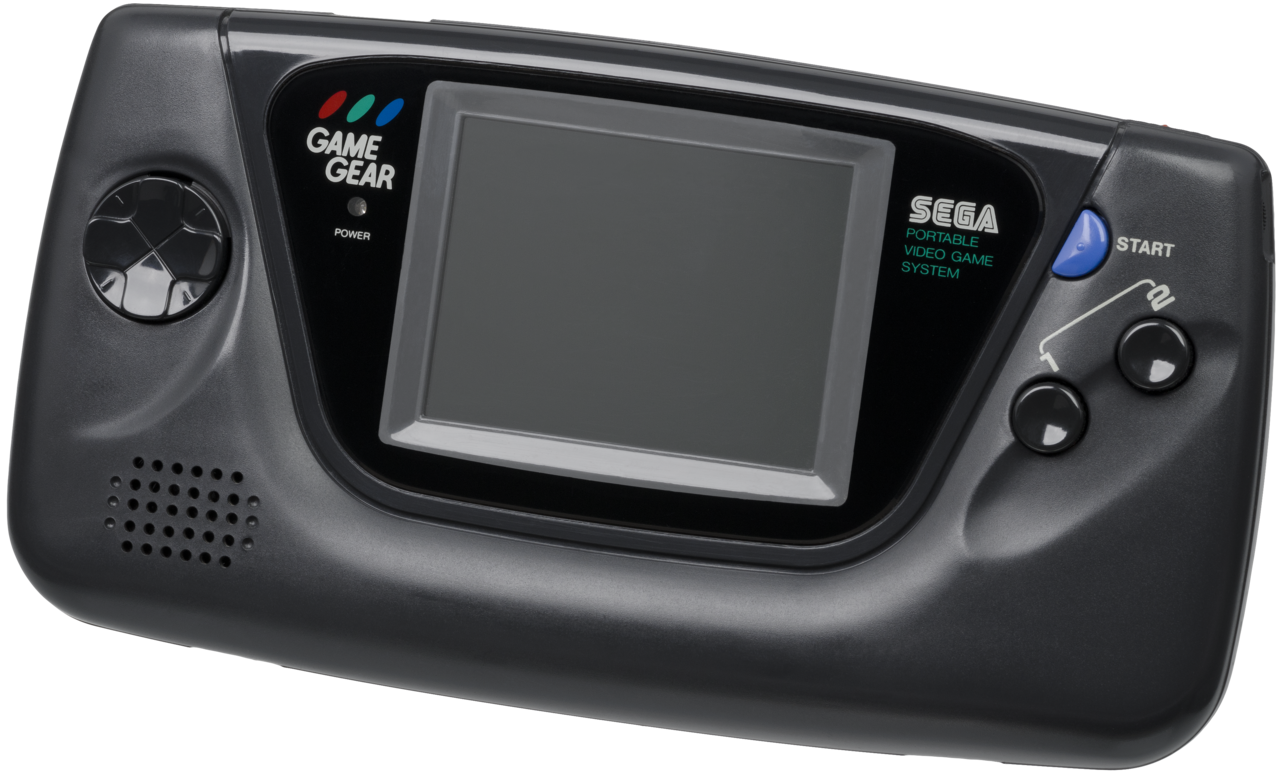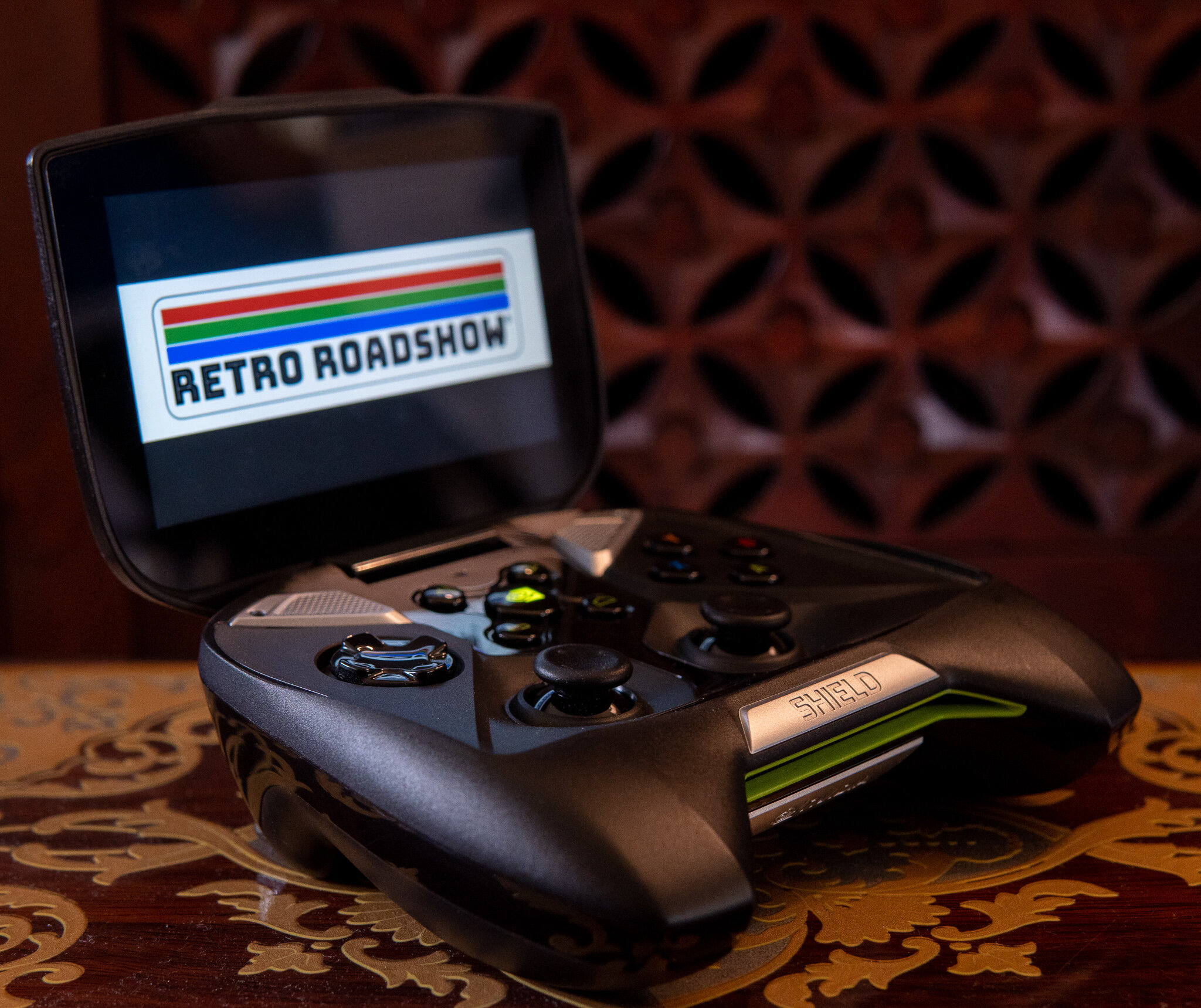Take The Show On The Road
The Retro Roadshow is home to a large collection of handheld video game systems, many of which you will already know, and some of which may be a surprise.
With nearly 120,000,000 units sold, the original Nintendo Game Boy was a success on a scale few other products of any category ever even approach. Released in 1989, the Game Boy was such a global success that it remains the image in many peoples mind any time "portable video games" are mentioned. Technically inferior to a long parade of would-be usurpers, the Game Boy's blurry black-on-green display, limited audio capabilities and chunky design somehow made the system more endearing to gamers. Frequently sold with a copy of the addicting puzzle game "Tetris" included, the Game Boy was eventually home to a long list of all-time-great games and characters, including Pokemon, Mario, Zelda, Kirby and many more. The Retro Roadshow is pleased to offer visitors the opportunity to play on several working examples of the original Game Boy.
Released 6 years after the original Game Boy, the Game Boy Pocket condensed the features and functionality of the original handheld into a smaller, lighter, more-portable form-factor. Not content to just replicate the original Game Boy, the Pocket offered some enhancements, such as longer battery life and a much-improved screen, all while maintaining compatibility with the 1,000+ commercially-released Game Boy game cartridges.
Further refining the design of the original Game Boy, the Game Boy Color brought a more powerful CPU, improved audio, and (most notably) a full-color display, all while maintaining nearly perfect backwards-compatibility with the enormous library of existing (non-Color) Game Boy games. With a huge (nearly 600 titles) library of Color-specific games like Pokemon Silver, Gold and Crystal, Metal Gear Solid, Harvest Moon, Wario Land, the Game Boy Color remains a delight to play with.
The final entry in the original Game Boy line (including the later "SP" and "Micro" revisions), the Game Boy Advance lived up to its name: a custom 32-bit CPU, higher-resolution / full-color display, high-resolution audio, additional control buttons and nearly flawless backwards-compatibility with existing Game Boy games. The "GBA" was a pocket-sized powerhouse, showing for the first time that Nintendo could incorporate very powerful hardware and their deep catalog of classic gaming characters and franchises to deliver an unparalleled portable gaming experience. The Retro Roadshow is excited to share several examples of each revision of the Game Boy Advance, along with a number of the best games available for the system.
A rare misstep in Nintendo's otherwise strong console lineup, the Virtual Boy is perhaps best remembered as the ultimate example of Nintendo's willingness to try some *very* strange things in pursuit of new ways to play. Built around an innovative stereoscopic-3D display (all images are rendered in red-on-black graphics), the Virtual Boy is able to produce graphics with impressive apparent depth, with some genuinely impressive games like "Mario's Tennis," "Red Alarm," "3D Tetris" and "Teleroboxer" taking full advantage. Occupying an uncertain place in Nintendo's product family (it was battery-powered like a portable system, but like a home console, it needed to be set on a stationary flat surface to actually play) and notorious for inducing severe headaches in users after short sessions, the Virtual Boy was retired from the market in less than a year. The Retro Roadshow is proud to have a fully-functional Virtual Boy for our attendees to experience, and we promise to have a bottle of aspirin available for post-gaming recovery.
Best known for their long series of highly-successful "NEO GEO"-brand arcade cabinets, SNK sought to branch out and attack Nintendo's Game Boy head-on with the Neo Geo Pocket Color. Sporting high-resolution graphics, high-quality sound, and the most insanely-satisfying "clicky" joystick ever found on a portable game system, the "NGPC" is home to a small but vibrant collection of fantastic games. SNK's expertise in fighting games is heavily reflected on the NGPC, with titles such as "SNK vs. Capcom: The Match of the Millennium," "King of Fighters R-2," and other quality arcade titles derived from SNK's successful arcade line. Furthermore, a small but impressive number of non-fighting-game titles were available exclusively on this system, such as "Biomotor Unitron" (a clever role-playing game clearly influenced by Nintendo's Pokemon series), "Sonic The Hedgehog Pocket Adventure" (a collection of the best Sonic levels found on other systems), and "Puzzle Bobble Mini," an incredibly fun and addicting puzzle game. The Retro Roadshow is delighted to expose our visitors to this little-known handheld system.
The Bandai WonderSwan (and later, WonderSwan Color) was a clever little handheld system designed by Gunpei Yokoi, the designer previously responsible for the original Nintendo Game Boy. Powered by a 16-bit CPU, the WonderSwan took advantage of a low price point and long battery life in comparison to its competition, Nintendo's Game Boy Color and SNK's Neo Geo Pocket Color. Later improvements took advantage of quality upgrades to the handheld's screen and added color. The WonderSwan is playable both vertically and horizontally, and features a unique library of games, including numerous first-party titles based on licensed anime properties, as well as significant third-party support from developers such as Squaresoft, Namco and Capcom. The Retro Roadshow is delighted to give attendees the chance to experience this little-known handheld system for themselves.
Some portable game systems were wildly popular, selling millions of units. Some portable game systems were less successful but still earned a loyal following and die-hard fans. And then... there's the Tiger Game.com, one of the most wretchedly-awful gaming systems ever inflicted upon the public. Originally envisioned as a sort of hybrid gaming system / internet communicator, the Game.com eventually arrived on the market with a surge of hype, which rapidly soured as potential buyers were presented with an overtly-insulting ad campaign. One especially memorable ad ended with with the remarkable tagline, "it plays more games than you idiots have brain cells." While it did have some noteworthy technical capabilities for the era (a stylus-driven touch screen, dual game-card slots, rudimentary dial-up internet access for sending/receiving email), the blurry, washed-out display, poor performance and shocking lack of worthwhile game titles quickly consigned the Game.com to the dustbin of history. The Retro Roadshow has the dubious honor of offering visitors the opportunity to experience a Game.com session for themselves, though we advise that any such exposure be quickly followed by a few minutes gaming on literally any other system on display.
During its record-setting run, the Nintendo Game Boy was challenged by a number of competitors, all of which tried (and failed) to unseat the Game Boy from its throne as the best-selling console of all time. While none of these competitors ever approached the Game Boy's level of success, the Sega Game Gear is perhaps the most successful of these "also ran" systems. Exceeding the Game Boy in nearly every possible way (larger, full-color screen, higher-powered CPU, richer audio, etc.) and armed with a compelling library of games starring characters and brands like Sonic, Shinobi, Batman, Disney and more, the Game Gear is fondly remembered for its chunky design, battery-devouring specs and typically-aggressive Sega marketing campaign. The Retro Roadshow is happy to offer visitors the chance to experience the Game Gear in all its glory
This is the NVIDIA Shield Portable from 2013. The device has the general shape of a game controller, but is really a full Android gaming console. The ‘cover’ contains a flip-up 5" display, and the system is powered by a 4-core ARM “Cortex” CPU running at 1.9GHz. Nvidia marketed the Shield Portable as a way to stream games from a desktop PC to the handheld over a home WiFi network for couch play, but that’s not necessarily what the device ultimately became best known for. Instead, the Shield Portable is one of the most powerful portable emulation systems ever released. Our Shield Portable is loaded with emulators and classic games, with hundreds of titles for various Atari consoles, vintage Nintendo consoles and even later systems like the PlayStation Portable, PlayStation 1 and Sega Dreamcast. The Nvidia Shield Portable may have been marketed for a use-case that wasn’t all that compelling (streaming PC games within walking distance of the gaming PC), but as a pocket-sized emulation library, it can’t be beat. The Retro Roadshow is pleased to offer the opportunity to experience this unique portable gaming powerhouse.
